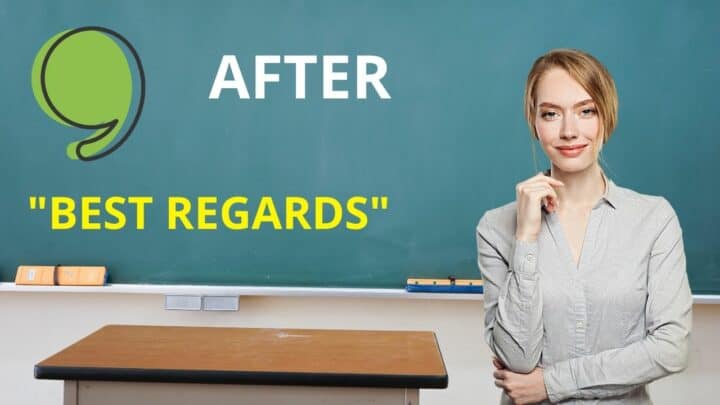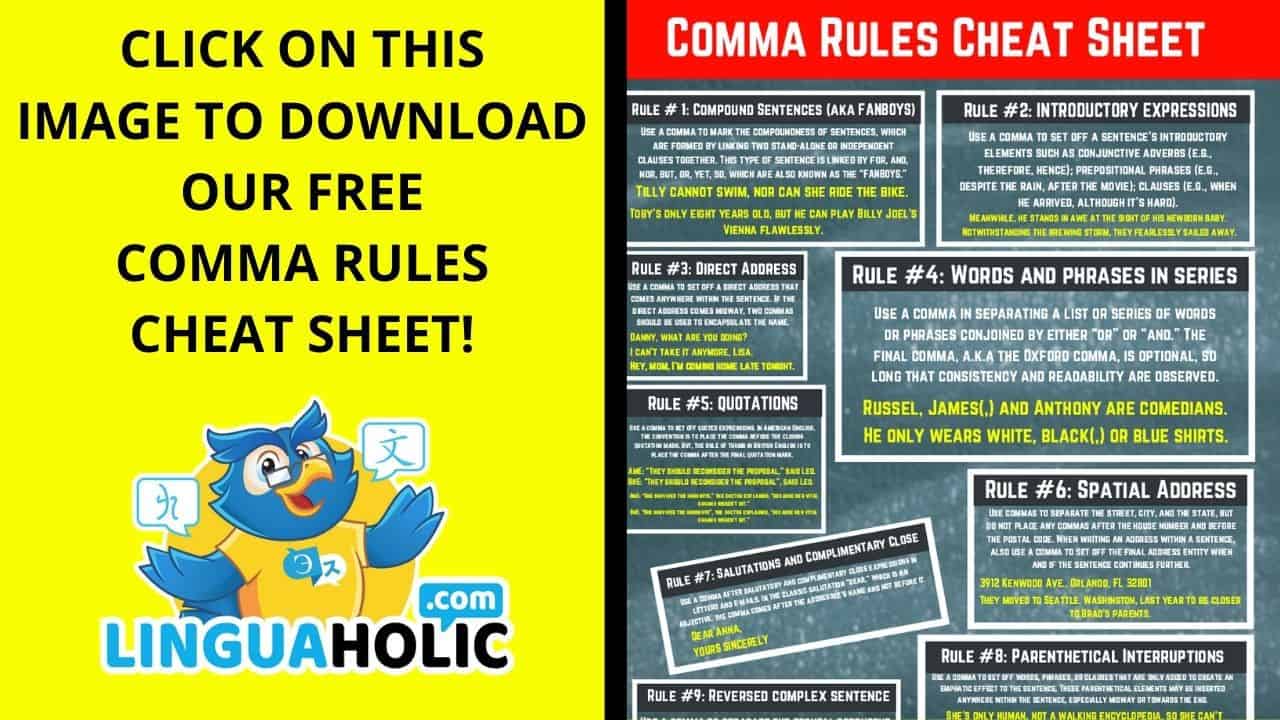Writing the closing of a letter can be tricky.
You have to find the right words for the occasion, which means choosing a phrase with the right level of formality.
If you choose wrongly, you could sound either overfamiliar or unnecessarily cold.
As if this isn’t enough to worry about, then there’s that ever-present issue of commas!
What do you do? Keep reading and we’ll explain to you how to handle this sometimes-tricky phrase.
Do you need a comma after “best regards”?
You need a comma when it’s used to close a letter or email or if it’s in a position in a sentence that normally requires a comma. You do not need a comma if you are using it in a sentence and you follow it immediately with “to” and the name of the person you want to receive your regards.
“Best regards” to close a letter or email
If you are ending a letter or an email with “best regards” followed by your name, there should be a comma after “best regards.”
This is the standard for any closing, including “sincerely,” “love” and “all the best.”
Usually, your name goes on the next line.
Therefore, your closing would look like this:
Best regards,
Bethany
This is how you are most likely to encounter the phrase “best regards.”
“Best regards” in a sentence
“Best regards” is most commonly used to close an email or letter, but you can also use it in a sentence.
“Best regards” plus “to”
When “best regards” is immediately followed by “to” in a sentence plus the name of a person or another identifier, it should not be followed by a comma.
Here are a few examples:
Give my best regards to your mother.
My best regards to them, and tell them I’ll see them soon.
I want to send my best regards to the people of this town and the mayor for their warm welcome.
“Best regards” at the end of a clause followed by an independent clause
Sometimes, you could switch the words around a little bit so that “best regards” comes at the end of a sentence:
Give Zoe my best regards.
If you then add another sentence and connect it with a conjunction, “best regards” needs to be followed by a comma like any other word at the end of an independent clause that is connected to another independent clause with a conjunction:
Give Zoe my best regards, and don’t forget to stop at the post office.
Give the nurse my best regards, and thank her for helping us.
The same is true if “best regards” comes at the end of a dependent clause followed by an independent clause:
If you give her my best regards, she will know I was thinking of her.
What exactly does “best regards” mean?
“Best regards” literally means that you are sending good wishes to someone.
It is a somewhat formal way of closing a letter or email, and you would use it for business or in a situation where you did not know someone well.
Outside of this context, however, it can have a warmer feeling although it is still also appropriate in a business or formal context.
For example, if your coworker was going on a trip to another city to meet with some colleagues you have also met with on a business trip, it would be appropriate to say, “Give them my best regards.”
More informally, you would use it to send pleasant wishes to someone you don’t know well but have fond feelings for.
So, you wouldn’t tell someone to give your best regards to your best friend or your spouse.
But if your friend was visiting their mother, who you know somewhat and think about fondly, you might say, “Give her my best regards!”

Hey fellow Linguaholics! It’s me, Marcel. I am the proud owner of linguaholic.com. Languages have always been my passion and I have studied Linguistics, Computational Linguistics and Sinology at the University of Zurich. It is my utmost pleasure to share with all of you guys what I know about languages and linguistics in general.


